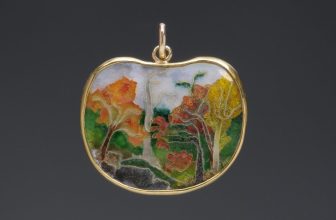
I still remember the first time I held an antique stick pin in my hand. It was a delicate Edwardian piece, topped with a tiny seed pearl, and it came from a velvet-lined box at a local estate auction. I didn’t win the bid that day, but I walked away with something even better—a fascination for these often-overlooked treasures.
Stick pins might seem like a small detail in the world of antique jewelry, but to me, they tell an outsized story. They’re part fashion accessory, part social signal, and part miniature work of art. And if you’ve ever inherited one or spotted one in a vintage shop, you’ll know just how captivating they can be.
What Are Antique Stick Pins?

Stick pins are slender pins with decorative tops, originally designed to secure a gentleman’s cravat or tie. By the 19th century, women also wore them as accents in hats, scarves, or even jackets. At first glance, they may look simple—but antique stick pins often feature gemstones, enameling, or even tiny cameos.
I’ve always found them fascinating because they bridge practicality with beauty. Unlike a diamond necklace, which was purely ornamental, a stick pin had a real function. Yet jewelers poured so much creativity into them, elevating the everyday into the extraordinary.
A Brief History of Stick Pins

- Early 1800s (Regency Era): Stick pins were mostly worn by men to secure cravats. Designs were simple, usually plain gold or silver.
- Mid-1800s (Victorian Era): The Industrial Revolution allowed mass production, but high society still favored handcrafted designs with pearls, garnets, and enamel. Romantic motifs like hearts and flowers were common.
- Late 1800s (Art Nouveau): Stick pins became miniature canvases for artistry—flowing lines, enamel work, and nature-inspired motifs dominated.
- Early 1900s (Edwardian & Art Deco): Platinum settings, old European cut diamonds, and geometric designs entered the scene. Women also adopted stick pins in hats, veils, and jackets.
One of my favorite discoveries was reading that Tiffany & Co. was producing stick pins by the 1870s. According to the Victoria and Albert Museum, these pins weren’t just functional—they became status symbols, just as much as cufflinks or pocket watches.
Common Motifs and Designs
When I started collecting, I was amazed at how diverse the designs could be. Some of the most common motifs you’ll find include:
- Floral designs: Roses, lilies, and forget-me-nots, often in enamel or tiny gemstone clusters.
- Animal figures: Birds, horses, and insects were especially popular in the Art Nouveau era.
- Symbolic motifs: Hands, hearts, anchors, and crescents carried sentimental meaning.
- Gemstone clusters: Small pearls, turquoise, garnets, or diamonds in star or flower patterns.
- Novelty pins: Tiny sporting symbols like horse heads or golf clubs, reflecting the hobbies of the wearer.
One of my own favorites is a tiny Art Deco stick pin shaped like a dragonfly. It’s just a half-inch of enamel and metal, but every time I look at it, I think of the craftsmanship poured into something so small.
Materials and Gemstones
Antique stick pins weren’t always made with precious materials—sometimes that’s what makes them so approachable to collect.
- Gold-filled and rolled gold were common for everyday pieces.
- Solid gold (10k, 14k, 18k) was used for higher-quality pins.
- Platinum and silver appeared in Edwardian and Art Deco designs.
- Gemstones ranged from seed pearls and garnets to old mine cut diamonds.
- Enamel was especially beloved during the Art Nouveau era, offering color and detail.
I still smile when I see a turquoise stick pin. For me, turquoise has always felt like a very “Victorian” stone—bright, cheerful, and perfectly suited to small, whimsical designs.
Famous Makers of Stick Pins
While many stick pins were unsigned, some famous jewelers left their mark:
- Tiffany & Co. (New York): Known for high-quality gemstone pins in gold and platinum.
- Cartier (Paris): Elegant diamond and platinum designs in the early 20th century.
- Fabergé (Russia): Enamel stick pins with Imperial flair, often tiny works of art.
- Georg Jensen (Denmark): Silver designs with simple, sculptural beauty.
Spotting one of these names on a stick pin feels like uncovering buried treasure. Once, I found a Tiffany stick pin in a box of mixed costume jewelry at a flea market—it wasn’t priced higher than the others, but the hallmark gave away its pedigree. That’s the thrill of antique hunting.
Stick Pins vs. Modern Jewelry

Today, men’s jewelry tends to be more understated—think simple cufflinks or watches. Stick pins, on the other hand, were bold little statements. Wearing one was like saying, I care about detail. I care about elegance.
That’s why I believe vintage stick pins still have a place in modern wardrobes. Some collectors repurpose them into pendants, while others wear them as lapel accents. Personally, I think they look fantastic tucked into a scarf or even displayed in a shadow box at home.
Tips for Collecting Antique Stick Pins
Here are a few lessons I’ve learned along the way:
- Check the pin shaft. Authentic antique pins often have longer, thinner shafts than modern ones.
- Look for hallmarks. Makers’ marks, gold karat stamps, or signatures can help confirm authenticity.
- Study the craftsmanship. Enamel work, tiny seed pearls, or old-cut diamonds often indicate a true antique.
- Beware of reproductions. Many stick pins were reproduced in the 1970s and later. Learn the differences in style and metalwork.
- Buy what speaks to you. Value isn’t just about price—it’s about sentiment and connection.
Final Thoughts
Antique stick pins may be small, but they carry a world of history, fashion, and personal charm. For me, they’re a reminder that even the tiniest detail in jewelry has a story to tell.
Whether you’re new to collecting or just curious about the forgotten corners of antique fashion, I hope you’ll give these understated gems a second look. Sometimes the most meaningful treasures aren’t the biggest or the brightest—they’re the ones that carry a quiet elegance, waiting to be rediscovered.






